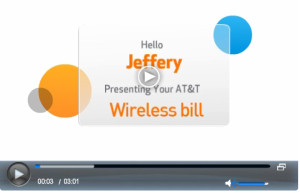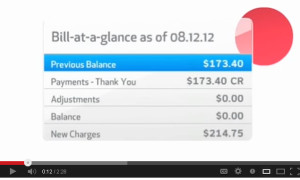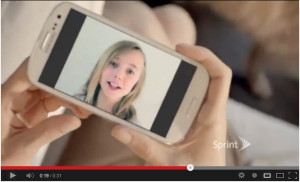So here’s the thought experiment: Say you’re starting a retail business. Doesn’t matter what you’re selling; let’s just assume it’s something really nice, something people really want…the new iThingamabob®, for instance. Okay, now hire some people to sell it for you; pay them minimum wage, make them work long hours without overtime, don’t provide them benefits, treat them like paper towels, and let them know you’ll fire them if they sit down on the job or look at you funny. Now sit back and enjoy how they’ll work their butts off for you to sell your products and give your customers great customer service.
Of course, this is a “straw man” thought experiment. Common sense will tell you they won’t work their butts off and they won’t give your customers great service. They’ll be sullen and won’t care if your customers are happy or not. They’re probably also exhausted because, in order to make ends meet, you’re probably only one of their employers. And they’ll be out of there the first chance they get to work for anybody who pays them more, or even treats them like human beings. So you’ll have to spend more money on a recruiting firm to keep replacing them. And your unemployment insurance premiums will go up. And you’ll have more shrinkage in inventory (they’ll get their compensation somehow). But hey, you’re at least saving your customers money by being stingy with your help.
Your employee costs should really fall under your marketing budget.
Employee compensation (not to mention simply treating employees like you value them) can actually be measured as an investment. In a recent article in The Atlantic by Sophie Quinton, the case is made that the incredible growth and success of three retailers, CostCo, Trader Joe’s, and QuikTrip, is a direct result of how well the employees of those companies are compensated. While an average checker in the U.S. makes about $20,000 a year (putting her or him below the poverty line), the average checker at these three companies makes double that. Yes, on the books that makes for higher cost of sales. And yet, in spite of those higher costs, those companies boast higher revenues and greater earnings, even during the Great Recession, and even more than low-cost rivals like Wal-Mart. (see MSN Business: Why CostCo is walloping Wal-Mart) Hmmm. Why do you suppose that is?
Could it possibly be because those employers are smart? Apparently they don’t see their employees as consumables, like cleaning supplies and cash register tape. They also realize that the morale and job-satisfaction of their employees has a direct relation to how they relate to their customers, and their customers’ experience shopping there.
In other words, they seem to regard their employees as part of their marketing.
It’s Rule #6: Give Love to Get Love
In our book, The Unbreakable Rules of Marketing, Rule #6 is Give Love to Get Love. It just doesn’t mean loving your customers (and your shareholders), it means loving your staff.
Your employees are the human face of your company. In order to get the very best from them, they have to feel like they are valued. Their morale has to be high. And they have to feel like they are taken care of. This includes not only making sure that their hourly wage is livable, but that they have health and dental, maternity leave if they need it, adequate time off, and an environment that is conducive to productivity. As CostCo’s CEO, Jim Sinegal once put it, “This is not altruistic, this is good business.” *(See NYT “How CostCo Became the Anti-WalMart”)
As an actual experiment yourself (vs a thought experiment), go into one of these stores and notice the customer service, the attitude of the employees toward you and each other. Ask for help and see what happens. If you don’t have a CostCo, Trader Joe’s or QuikTrip handy, then you must surely have a Starbucks (another successful company that attends to the well-being of its employees). Then go into a store known (fairly or unfairly) for stingy employee compensation, say, oh, I don’t know–Wal-Mart, for instance–and notice the attitude of their employees. Again, ask for help and notice the level of enthusiasm. Is it any wonder why CostCo is stealing Wal-Mart’s lunch money…I mean market share?
Okay, that’s fine for retailers, but what about B2B?
Even if you are a B2B business, this Give Love to Get Love rule still applies when it comes to your employees. Countless studies from MIT’s Sloan and other business schools have demonstrated that good employee compensation leads to better products, more solid customer relations, more efficient operations, more productivity, lower turnover, and higher profits. Even while so much manufacturing has gone to low-wage countries like China and India in recent years, the “high-paid” U.S. still remains, per-capita, the most productive in the world, by a wide margin.
When I was just starting in my advertising career, I worked for an agency in L.A., DJMC (Davis Johnson Mogul & Colombatto–now Davis Elen). Even though my gruff boss, Bob “Collie” Colombatto, liked to hear himself say, “I don’t need to thank my employees. I thank them every two weeks in their paychecks,” he did thank us very warmly in those checks. We were extremely well-compensated. We had luxurious benefits (by today’s tightwad standards)–full medical and dental. And the company was overly generous with its holiday bonuses. As a result we all worked like maniacs for those guys. During the six years I was there, we in the creative department were not only raking in the meaningless industry awards, the company grew over 500% in billings to $100 million. So all that butt-reduction work and overly generous compensation was paying off–and the Bobs (Colombatto and Davis) were generous in sharing the profits with their employees. We would have done anything for those two, and they knew it.
Years later, when some colleagues and I started our own agency, we were resolved to create the kind of company we ourselves would want to work for. In my mind that model was DJMC. So we paid our staff well. Though we were a small company and weren’t mandated to do so by state law, we provided healthy benefits (medical and dental). We were generous with holiday bonuses. We were generous, too, with our employee policies. And when the company took a systemic hit from the economy, we, the owners, took the hit first in our own compensation rather than take it out of our employees. The result was dramatic growth and profitability, an industry low in employee turnover, and extremely efficient operational costs. Our employees showed us their love by working like maniacs and bending over backwards for our clients. And our clients, in turn, loved us by hiring us like maniacs. It was a maniac’s love fest all around.
It cost something. But it made us more.
It’s not an expense; it’s an investment.
I’ve said this before. And I’ll keep saying it: What you spend on marketing is not an expense (in spite of what your accountant may tell you), it’s an investment. You should expect a return on what you invest in marketing. But I’ll go further with this and state, categorically, that what you spend on your employees is also a marketing investment. Their enthusiasm to work their butts off for you, to represent you to your customers, either in the quality of the products they make or in the service they provide, will pay you back in direct proportion to what you invest in them. So invest generously. Then look for the return.
 I don’t know how many of you have received your AT&T Wireless bill as a video recently. I’m not kidding. So now, what used to take, oh, 15-30 seconds to log on, scan your bill and pay it, now walks you through a playfully animated video that takes two-and-a-half minutes to
I don’t know how many of you have received your AT&T Wireless bill as a video recently. I’m not kidding. So now, what used to take, oh, 15-30 seconds to log on, scan your bill and pay it, now walks you through a playfully animated video that takes two-and-a-half minutes to 




